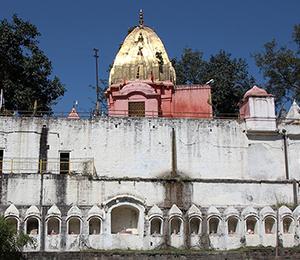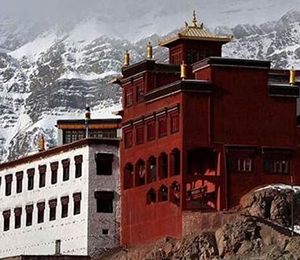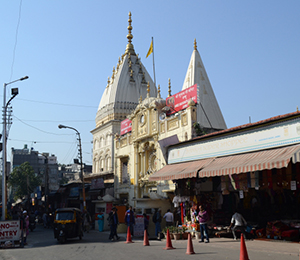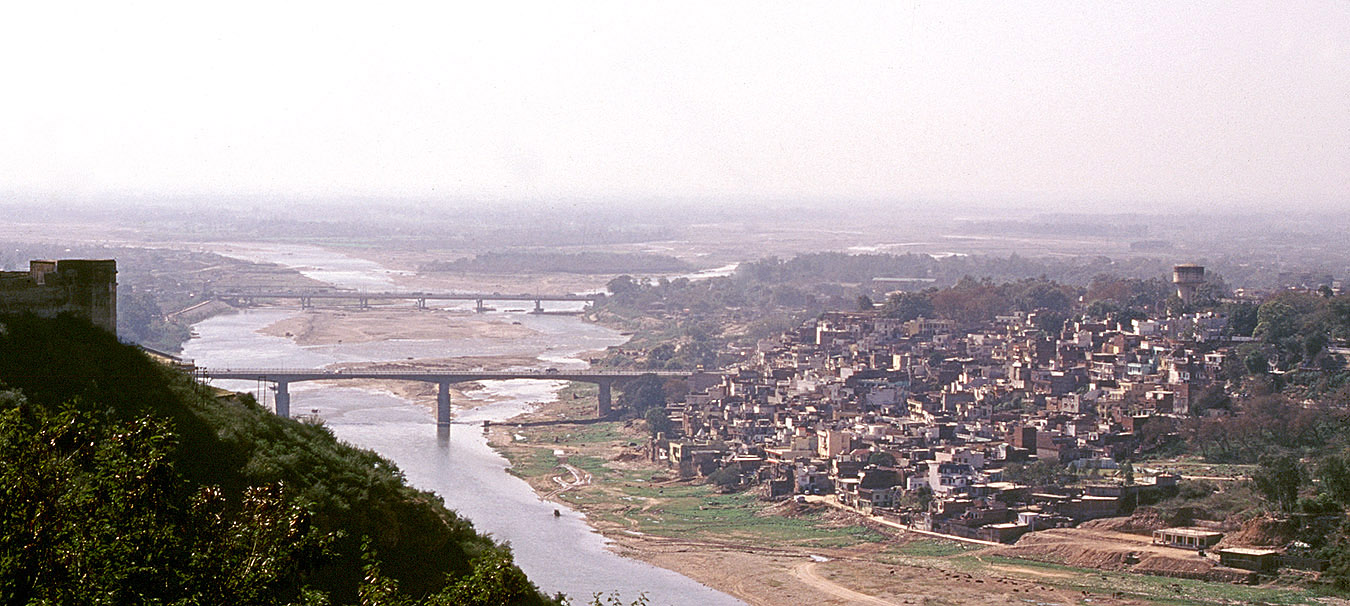
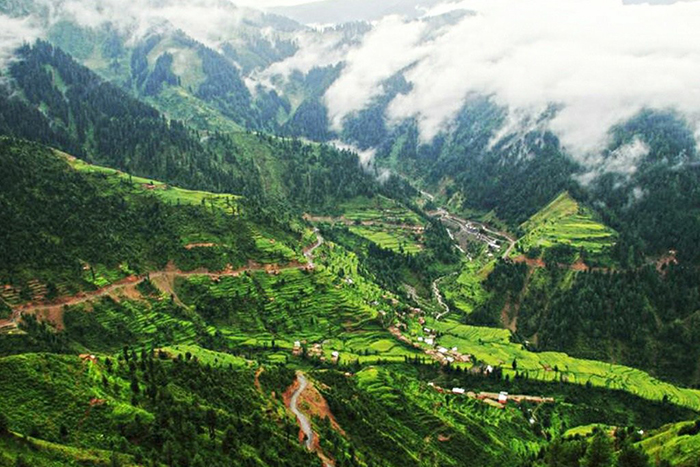
Jammu is the largest city in the Jammu Division and the winter capital of state of Jammu and Kashmir in India. It is situated on the banks of the Tawi River. It is administered by a municipal corporation. Jammu is the Duggar land where the past still has a living presence. It is the land of grand ancient temples, and beautiful palaces all nestling in the foothills of the Himalayas. According to local tradition, Jammu is named of its founder, Raja Jambulochan, who is believed to have ruled the area in the 9th century.The local tradition in fact holds the city to be 3000 years old but this is not supported by historians. It is said that, on becoming King, the Suryavanshi Jammu Lochan went on a hunt and, crossing the Tawi, found a deer and a tiger drinking water from the same tank. His ministers explained that this meant that the soil of the place was so virtuous that no living creature bore enmity against another. Raja Jambu Lochan, who lived in the later Vedic period, decided to found his capital, Jambupura, on this soil, on the right bank of the Tawi, overlooking his brother king Bahu's fort. Today the temple of Maha Kali (better known as Bahu or Bawey Wali Mata), located in the Bahufort, is considered second only to Mata Vaishno Devi in terms of mystical power. The present temple was built shortly after the coronation of Maharaja Gulab Singh, in 1822. The existing fort, as well as the Manasabdar's palace inside it, was constructed in 1820.
Jammu is justly famous for its temples. In fact it is known as the City of Temples and the every fame of its, tends to overshadow its palaces, forts, forests and powerful Ziarats. If Bahu Mata is the presiding deity of Jammu, the Dargah of Peer Budhan Ali Shah is the other shrine that protects Jammuites. The other major tourist attraction is the Raghunath Temple Complex. Maharaja Gulab Singh began the construction of the Raghunath Mandir Complex in the crowded downtown Bazaar named after it, in 1851. It was left to his son, Ranbir Singh, to inaugurate it six years later perhaps the most popular temple, it contains representations of almost entire Hindu pantheon, though the emphasis falls on the various incarnations of Lord Vishnu. The complex houses a rich collection of ancient texts and manuscripts.
Bestowed with innumerable temples, this “City of Temples” has people of several races and mixed culture spreading from Chenab to Ravi. Situated at an altitude of 305 meters, surrounded by Pirpanjal and Sivalik mountains, Jammu, the capital of J&K, has climate similar to northern India. Popular as Dogras, Jammuites are friendly in nature and born warriors. For decades, they have paved the way for the tourists traveling into the state.
Rajdarshani ascribes the foundation of Jammu to about 3650 BC. Kingdom of solar race of Ayodhya spread over Shivalik hills to river Ravi & Chenab when Sudharshana the 20th descendant of Rama ruled Ayodhya. His younger son, Agnigir migrated to Shivalik hills and traveling through Nagrota, reached the banks of Ravi and ruled of Bupanagri, the present Kathua. Agnigir was succeeded by chiefships of many Rajas, one of whom was Agnigarbha who had 18 sons and was succeeded by his eldest son Bahu Lochan who founded Bahu Nagar (today Bahu Fort stands here). His brother Jambu Lochan, who ruled during 6th century in Kalyuga, i.e. 2500 BC, expanded his dominion and desired to build his capital at an ideal place. One day while hunting, he saw a deer and a tiger drinking at the same pond. He was informed that the soil of the place excelled in virtues, so no living creature bore animosity against each other He founded a new town at this spot and called it Jambupura (today Purani Mandi stands here). Jambu Lochan was succeeded by his son Puran Karan who shifted capital from Bahu Nagar to newly founded Jammu. Down the line, successors ruled Jammu and extended the kingdom Banihal Kashmir. Thereafter, Jammu saw many rulers from dynasties of Dutts, Devs, Dhars and many more till Amir Timur occupied Delhi in 1398. He entered Shivaliks, Kangra and crossed Trikuta hills to conquer Jammu in 1399, marching from Mansar. Dogra Rajas again took over the charge of Jammu between 15th and 17th century.
In AD 1800 Maharaja Ranjit Singh of Punjab took over Lahore and marched to Jammu. In AD 1812, Jammu assigned as Jagir to his elder son, Prince Kharak Singh. On realizing the spirit of Jamwals, Mian Mota of Jammu was made the Minister by Sikhs. Maharaja Ranjit Singh selected Gulab Singh and his brother Dhyan Singh to rule Jammu in AD 1813. Gulab Singh’s grateful sovereign bestowed him Jammu as his Jagir and he became Maharaja in AD 1822. He appointed Zarawar Singh as Hakim of Kishtwar who further advanced to Ladakh, Baltistan and Tibet for expansion of the empire.
Maharaja Ranjit Singh entrusted Gulab Singh with administration of large territories and transferred the lease of Gujarat in AD 1830, which yielded huge revenue. After Maharaja Ranjit Singh’s death, Gulab Singh succeeded in getting control, of Sialkot and appointed a governor in Peshawar. He purchased Kashmir from the British against a sum of money, some cattle, gifts and a yearly tribute under the treaty of Amritsar in AD 1846. His forces joined the British troops and he got the title of Maharaja of Jammu, Kashmir. Thereafter Jammu, Kashmir and Ladakh became the empire of Dogras whose rule lasted up to 1947.
An aura of blessings and flowers showered by the gods themselves - is the first feeling one gets while entering into the Jammu city. This low belt of plains exists due to deposition of silt and sand out of streams flowing from the foothills of Himalayas. With the culture more like that of northern India, a difference made by the Dogri language perhaps outshines Jammu from the states nearby. People of Jammu are born warriors with friendly nature; their sweet language compels one to extend a hand of friendships in the first instance.
The old city has some of the most captivating residential areas like Panjtirthi, Parade, Jama masjid, Jain bazaar Khati-ko-talab, where the lively bazaars and closely built houses make walk pleasant even in torrid summers.The modern areas of Gandhi Nagar, Trikuta Nagar, newly settled Sidhra and multiplexes of Bahu area, compete with developed areas of metro cities of the country.
Bustled with the Kashmiri people during winters, Jammu could be mistaken for a city of Kashmir valley than of Jammu. Presence of a large number of Kashmiri Pundits has diversified the cultural richness of Jammu which itself speaks of the hospitality and co-existence quality of the Jammuites.
Jammu for its mixed culture offers a variety of meals, many Vegetarian and Non-vegetarian restaurants are rights from the Jewel chowk upon Residency road. Jewels restaurant and Fast food in provides food in most hygienic environs, the revolving restaurant on top of the K.C Hotel can be most romantic food station is also favorite joints for young couples. The Vaisno Bhojnalyas around Raghunath bazaar provide food with homely taste. The visitors can also have a quick meals at the restaurants and bhojnalias near railway station.
Jammu is known for the cheapest textile products. Samba, on the Jammu Pathankot road famous for block printing. Vegetable dyes are used for block printing on a variety of clothes and bed covers. Phulkari embroidery is another craft originally from Punjab. This includes flower designs on items like handkerchiefs, table covers, and wall hangings. Paintings from Basohli, a village in Kathua, are based on themes like Vaishnavism, Ramayana and the Gita.The history and poetry is presented myriad colors of life and landscape of the region. Raghunath Bazaar and Hari Market are famous for traditional Dogri items and jewelry. Kashmiri handicrafts and dry fruits are also available here. Bargaining is a fun filled activity at some places.
The colorful religious festivals set the right mood for people to get together and perform the righteous duties in traditional way.
(13 January) also known as Makar Sankranti, is celebrated to herald the onset of spring. People from every religion join on this occasion to organize a bon-fire and distribute special sweets and nuts. Chajja, a local dance is usually a special feature during the festival.
(13 April), the harvest festival, is celebrated on the first day of Baisakhi month of the Vikrarm calendar.
(March April, September- October), this festival is held twice a year at Kali temple in Bahu Fort.
(February March), this festival is celebrated on Shivratri, when people celebrate the marriage of Lord Shiva with Goddess Parvati
(October - November) is celebrated to commemorate the legend of Baba Jittu at a village called Jhiri, 14 km from Jammu.
A three day festival is organized every year by J&K Tourism during Baisakhi at Mansar Lake. The festival also provides a platform for promotion of local craftsmanship and cuisine.
Dance is the oldest and full of life art of Jammu, performed by both men & women expressing their feelings in rhythm and body movements. The dogri dance expresses the vitality and gallantary of their heroes. It is performed on special occasions like advent of spring, harvest time, wedding or the birth of a male child. Accompanied by music of flute, shenaee’s& drums, dogri folk dances are different like its region.
Festival that showcases the religious and cultural heritage celebrated annually during September-October at Katra. The religious processions are organized in the evenings where the Jhankis of different gods and their disciples is taken out by the local people. A two day festival is full of cultural and musical programs.
Performed a Lohri festival this dance is also called peacock dance as it also indicates the advent of the spring. Chajja is model of peacock surrounded by other dancers.
Baisakhi the festival of harvest is celebrated with Bhangra dance. A clown and a made up women are important characters of the dance. The drum beater in the middle of dancers makes everyone do bhangra and shout in rhythm hoi, hoi and bale, bale.
Dance of higher regions mostly in Badherwah, Kishtwar and Ramnagar. The word Kudd means mile (festival), it is performed generally at night around the fire.
It means blooming, dance is connected with male child birth which symbolises a bud. It is performed by the farmers before they eat new grain.
Rasilla represents Ras of Krishna and Gopis. The dancers have small sticks in hands, which are stroked with the tune of a flute.
Jammu Airport is in the middle of Jammu. It has direct flights to Srinagar, Delhi, Amritsar, Chandigarh, Leh and Mumbai and Bengaluru. Jammu Airport operate daily 30 arrival and departure flights which is Go air, Air India, Spice jet and Indigo running daily flights.
Jammu city has a railway station called Jammu Tawi (station code JAT) that is connected with major cities of India. The old railway link to Sialkot was broken after the Partition of India and Jammu had no rail services until 1971, when the Indian Railways laid the Pathankot - Jammu Tawi Broad Gauge line. The new Jammu Tawi station was opened in October 1972 and is an origination point for Express trains. With the commencement of the Jammu–Baramulla line, all trains to the Kashmir Valley will pass through Jammu Tawi. A part of the Jammu–Baramulla project has been executed and the track has been extended to Katra. Jalandhar - Pathankot - Jammu Tawi section has been doubled and electrified.
National Highway 1A connects Jammu with rest of India. Most northern State Road Transport Corporations like Punjab, Haryana, Himachal Pradesh and Delhi have daily bus services to Jammu. J&K SRTC has daily bus service from Delhi to Jammu in A/C and non-A/C coaches. Luxury coaches of private transporters operate from various cities to Jammu. Buses start in the evening generally from Tees Hazari and Red Fort in old Delhi and Cannaught Circus in New Delhi. The highway passes through villages fertile land of north India, Transport facility of all kinds is available at taxi stands at the Airport, Railway Station, TRC Jammu and other parts of the city.
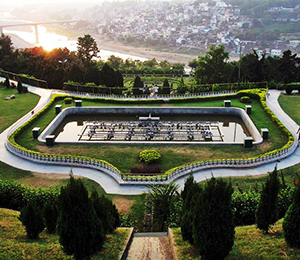

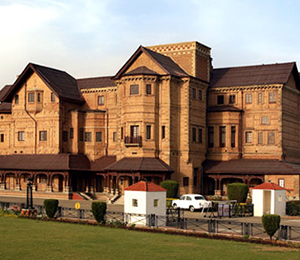
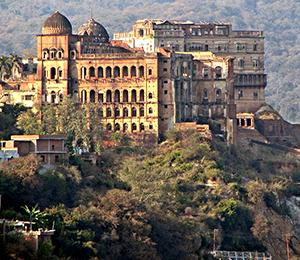
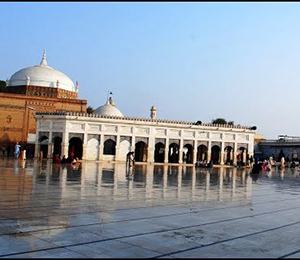
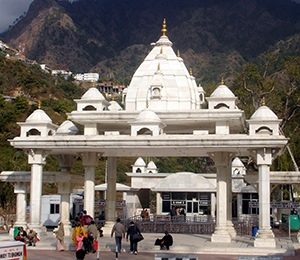
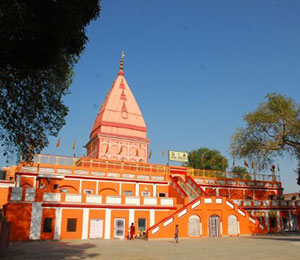
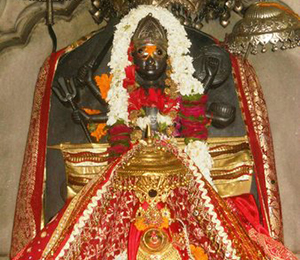
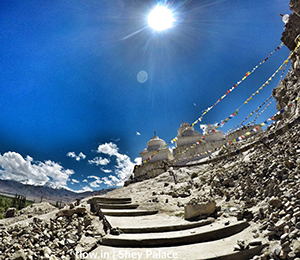
A village near Basohli, the ruins of a temple in Billawar and the ruins of old wells....
